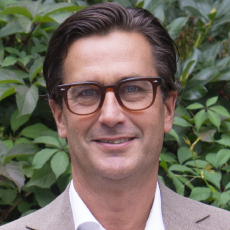Where is energy storage situated in this fast-changing environment of renewable resources?
We are living in historic times where renewable energy and battery storage are becoming main players of a market that wants to get rid of its base energy sources as fast as possible. While being clean alternatives, solar and wind are intermittent sources that are not yet growing at a steady pace and need the support of energy storage solutions in any shape or form.

Simply put, batteries are part of a system that will prove to be crucial for managing and balancing the grid in the future.
The somehow sudden switch to renewable energy and the increased employment of electric cars are two of the elements that can really strain the grid.
How is Sweden perceiving the storage technologies that you are proposing?
The general public has not yet understood the importance of storage technologies and the main discussion revolves only around batteries used in the EV industry - an area in which Sweden is seen as an absolute forerunner. In order to balance the grid or work with different types of applications like peak shaving or time shifting you need distributed energy storage. However, these concepts are not yet on the political agenda and there are very few residential solar panel installations in Sweden that have energy storage solutions linked to them.
Up in the North where we have a surplus of hydropower, energy prices are very low but, unfortunately, we do not have enough capacity to transport this abundant energy down South to level the market and help consumers. Storage solutions installed in domestic residences could charge during night time when the prices are lower and use the energy collected during the day when electric energy has a higher price.
How is the political side positioned in relation to the importance of battery storage solutions?
We have not seen genuine interest towards this important matter and this is the reason why we need to spark a debate about the importance of storage to the grid, not only for offloading the peaks but also for balancing the networks. There is a functional business model in place where a user can connect their storage to a larger aggregator and thus become part of a network that pays for the energy that the user injects into the system. However, the market is still not mature enough and we are facing challenges due to the lack of debate about energy consumption, optimization and integrated solutions. For batteries to work properly, they need to be integrated inside a solution which consists of inverters and an EMS (energy management system). In addition to all of these, system standardization and optimization is a must have. Everyone has a responsibility to offload the grid to even out the peaks and this can only be done through smart systems.
What are the main advantages Nilar has in order to make it stand out on the market?
Nilar is a technology startup at its core and we have developed a unique battery technology that focuses on stability and safety. Our Hydride batteries are bipolar, using a layer-based architecture where many cells are close together and offer a low internal resistance that creates many technical possibilities - like the communicating gas channel that can be re-oxygenated once the battery is depleted, thus obtaining an almost new battery. The main material used in manufacturing them is nickel, which is much more common than lithium, so we are able to dodge the supply chain issue. Moreover, nickel batteries guarantee a much safer technology since they cannot self-ignite while a lithium battery can explode if the temperature inside it is not controlled.
Which markets have shown most interest towards the battery technologies that you are developing?
There are many markets which are intrigued by our product thanks to the technology that we are employing. Although we cannot use our batteries in EVs because they are too heavy, they are extremely useful for stationary storage systems. Battery chemistry is highly complex and to an extent we know what is happening inside, but there are still some unknown reactions which translate into very long R&D cycles.
The demand is huge so we have to make sure that the technology we are developing is meeting market requirements. For starters we will be focusing on Northern Europe because we are still in an early development phase and we are a small company of only 100 employees. We need to make sure that we are directing our resources towards the important aspects while also remaining cost efficient.
Where do you see Nilar in five years from now?
In a five years' time we plan to have 10 to 15 system integrators that are specialized in very specific niches while also developing systems with multiple applications, so that our storage solutions can be used as an UPS. Their purpose would be to act as energy storage systems for factories, in case of energy shortages. They could be either privately owned or part of a larger system within communities.





